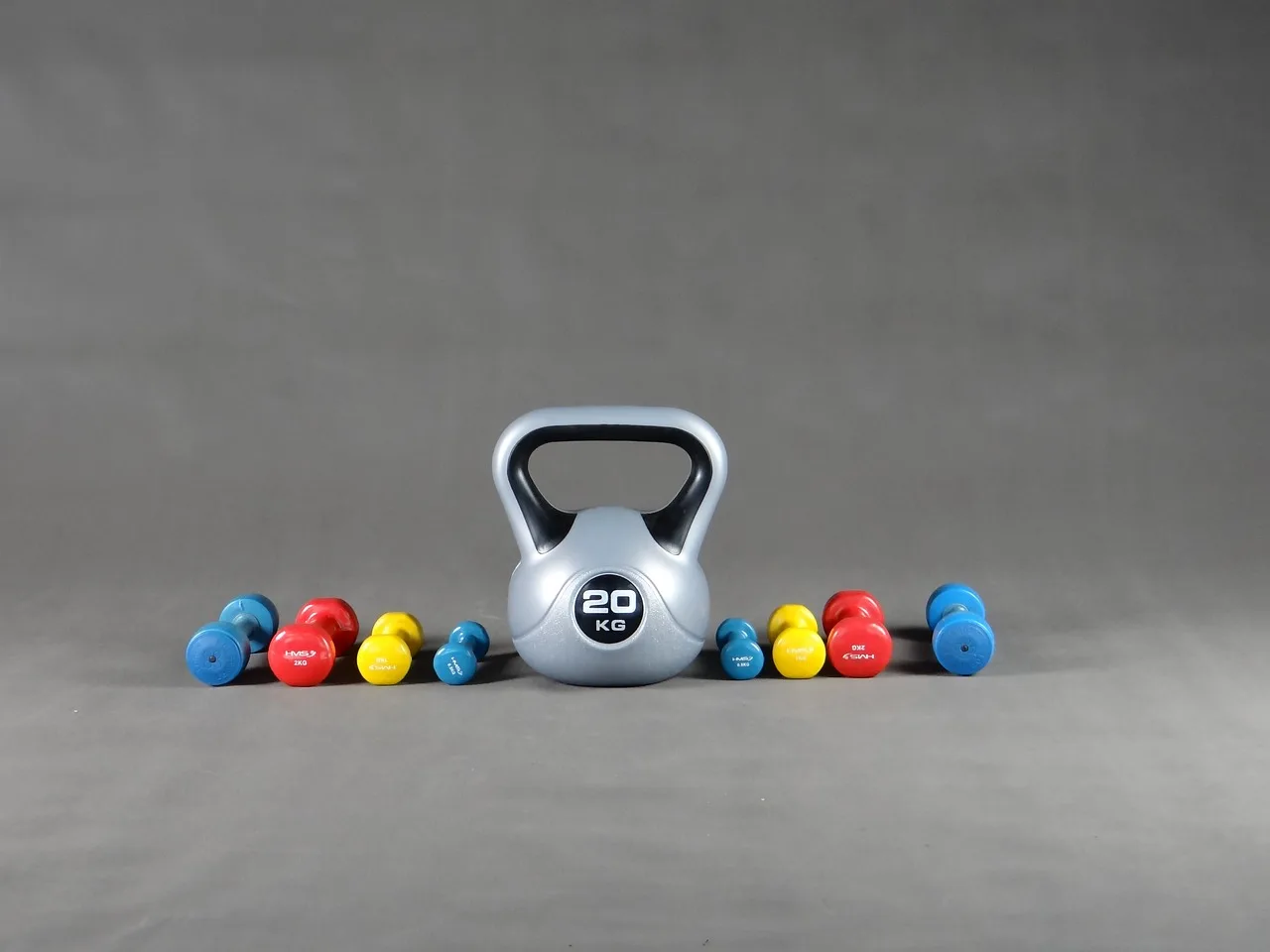Introduction
High-intensity interval training (HIIT) has gained significant popularity in recent years as an efficient and effective way to enhance cardiovascular fitness and promote weight loss. HIIT involves alternating periods of intense exercise with short recovery periods, pushing the body to its limits and maximizing overall workout effectiveness. This approach is known for its ability to yield impressive results in a relatively short amount of time, making it an appealing option for busy individuals seeking optimal fitness gains.
One specific form of HIIT that has garnered attention is Tabata. Named after its creator, Dr. Izumi Tabata, this training method follows a distinct protocol that sets it apart from traditional HIIT workouts.
Tabata utilizes ultra-high intensity exercise intervals followed by brief rest periods, causing a rapid rise in heart rate while challenging both aerobic and anaerobic systems simultaneously. Understanding the difference between traditional HIIT workouts and the Tabata protocol can provide valuable insights into choosing the most suitable training approach based on specific goals and preferences.
Brief Explanation of High-Intensity Interval Training (HIIT)
High-intensity interval training (HIIT) is a workout strategy that combines short bursts of intense exercise with intervals of active recovery or complete rest. The intensity during the work intervals should be near maximum effort, pushing individuals beyond their comfort zones for optimal results.
These high-intensity bursts are typically followed by shorter rest or recovery periods, allowing the body to partially recover before diving back into another round of exertion. The concept behind HIIT is rooted in maximizing calorie burn through increased post-exercise oxygen consumption (EPOC), commonly known as the “afterburn effect.” EPOC refers to the elevation in metabolic rate that continues for hours after an intense workout session due to increased oxygen demand required by the body to restore normal physiological functions and repair muscle tissue.
By incorporating both aerobic and anaerobic exercises, HIIT workouts challenge the body’s energy systems, leading to improvements in cardiovascular endurance, fat burning, and overall fitness levels. HIIT has become particularly popular due to its time efficiency – obtaining comparable or even superior results to traditional steady-state cardio sessions in significantly less time.
Introduction to Tabata: A Specific Form of HIIT
Tabata is a specific form of high-intensity interval training (HIIT) that follows a unique protocol developed by Dr. Izumi Tabata and his team at the National Institute of Fitness and Sports in Tokyo. Initially designed for Olympic speed skaters, it gained recognition for its ability to rapidly improve both aerobic and anaerobic capabilities.
The Tabata protocol consists of performing exercises at maximum effort for 20 seconds followed by only 10 seconds of rest, totaling four minutes per cycle. This intense work-to-rest ratio challenges individuals to their physical limits, pushing them into an anaerobic state where they rely heavily on stored energy sources due to the short intervals provided for recovery.
A distinguishing feature of Tabata is its emphasis on intensity over duration. While traditional HIIT workouts may involve longer intervals with varied work-to-rest ratios, Tabata condenses the exercise and rest periods significantly.
This technique aims to maximize effort during each burst while ensuring brief recovery intervals are just enough for participants to regain minimal amounts of energy before diving back into another round. As a result, Tabata workouts offer unique benefits by effectively targeting both aerobic and anaerobic systems simultaneously while boosting metabolic rate post-workout through excess post-exercise oxygen consumption (EPOC).
Understanding Traditional HIIT Workouts
Definition and Principles of Traditional HIIT
Traditional high-intensity interval training (HIIT) is a form of cardiovascular exercise that alternates between short bursts of intense activity and periods of rest or lower intensity. It revolves around the principle of pushing your body to its limits during the high-intensity intervals, followed by a brief recovery period. The duration and intensity of these intervals can vary depending on the specific workout routine, but they typically range from 20 seconds to a few minutes.
What sets traditional HIIT apart from continuous aerobic exercise is that it takes advantage of both aerobic and anaerobic energy systems. During the intense intervals, your body relies heavily on anaerobic metabolism, which means it produces energy without using oxygen efficiently.
This results in the accumulation of lactic acid in your muscles, causing that familiar burning sensation. The subsequent rest periods allow for partial recovery and activate your aerobic system, allowing you to sustain the intensity as you repeat the cycle.
Benefits and Popularity of Traditional HIIT
Traditional HIIT has gained immense popularity over recent years due to its numerous benefits for both fitness enthusiasts and time-strapped individuals seeking efficient workouts. One significant advantage is its ability to improve cardiovascular fitness. When you subject your heart and lungs to intense intervals followed by rest, their capacity for delivering oxygen increases significantly over time.
This leads to improved endurance, better heart health, lowered blood pressure levels, and increased overall stamina. Additionally, traditional HIIT has been praised for its efficacy in fat burning and weight loss.
The high-intensity intervals push your body into an elevated metabolic state where it continues to burn calories even after completing the workout due to excess post-exercise oxygen consumption (EPOC). This phenomenon ensures an extended calorie-burning effect long after leaving the gym or finishing a session at home.
Moreover, traditional HIIT’s time efficiency makes it an attractive option for individuals with busy schedules. With shorter workouts ranging from 20 to 40 minutes, it allows you to achieve significant health and fitness benefits while fitting easily into your daily routine.
This accessibility has contributed to the widespread adoption of traditional HIIT across gyms, fitness classes, and home exercise programs. Traditional HIIT workouts involve alternating intense bursts of activity with brief recovery periods.
This form of exercise offers various advantages such as improved cardiovascular fitness, enhanced fat burning and weight loss, and time efficiency. By understanding the principles and benefits of traditional HIIT, individuals can make informed decisions about incorporating this training method into their fitness routines.
Unveiling the Tabata Protocol
Origins and History of Tabata Training Method
The Tabata training method, named after its inventor Dr. Izumi Tabata, emerged in the 1990s. Dr. Tabata and his team at the National Institute of Fitness and Sports in Tokyo developed this high-intensity interval training (HIIT) protocol while working with Olympic speed skaters. They aimed to maximize their athletes’ anaerobic capacity and enhance their performance.
Originally designed for Olympic speed skaters in Japan, the Tabata method gained recognition due to its effectiveness in improving both aerobic and anaerobic fitness levels rapidly. Over time, it transitioned from being a specialized training program for elite athletes to a popular form of exercise accessible to everyone.
Key Features of the Tabata Protocol
The hallmark of a Tabata workout lies in its structure: intense bursts of exercise followed by short rest periods. The protocol involves performing exercises at maximum effort for 20 seconds, then resting for only 10 seconds before repeating the cycle. This pattern is repeated eight times consecutively, summing up to a total workout time of four minutes.
This precise work-to-rest ratio is what differentiates Tabata workouts from other forms of HIIT. It creates an environment where you push your body to its limits within each 20-second interval before allowing it just enough time to recover during those brief 10-second rests.
Unique Benefits Offered by Tabata Workouts
Tabata workouts offer numerous unique benefits that make them stand out among other HIIT methods. Firstly, they significantly enhance anaerobic capacity — the ability to perform high-intensity exercises without relying primarily on oxygen consumption. This is achieved through activating fast-twitch muscle fibers that are responsible for explosive movements, stimulating an increased production of ATP (adenosine triphosphate) for immediate energy, and improving lactic acid tolerance, which delays muscular fatigue.
Additionally, Tabata workouts have been found to elicit the “Excess Post-Exercise Oxygen Consumption” (EPOC) effect. This means that even after completing the workout, your body continues to burn calories at an elevated rate due to increased oxygen consumption.
This extended calorie burn post-exercise can be attributed to the metabolic demands generated during the intense intervals of a Tabata session. Understanding the origins and key features of the Tabata protocol provides valuable insights into its effectiveness as a training method.
With its short yet intense intervals and focus on anaerobic capacity improvement, Tabata workouts offer unique benefits that set them apart from traditional HIIT approaches. Incorporating Tabata into your fitness routine can help you achieve remarkable results in terms of increased aerobic and anaerobic fitness levels while maximizing calorie burn both during and after your workout.
Differences Between Traditional HIIT and Tabata Workouts
Duration and intensity differences
Traditional HIIT workouts and Tabata workouts share the common goal of high-intensity interval training, but they differ in terms of duration and intensity. Traditional HIIT typically involves longer intervals of exercise followed by rest periods that can vary in length.
For example, a traditional HIIT workout may include intervals of 30 seconds on, followed by 30 seconds off. This allows for more recovery time between intense bursts of exercise, enabling participants to sustain a higher level of effort throughout the workout.
On the other hand, Tabata workouts are characterized by shorter intervals with a specific work-to-rest ratio. The Tabata protocol consists of 20 seconds of intense exercise followed by a mere 10 seconds of rest, repeated for a total of four minutes.
This creates an incredibly intense training session where participants push themselves to their limits during each 20-second interval. The short rest periods in Tabata workouts leave little time for recovery, maximizing the metabolic demands placed on the body.
Traditional HIIT: Longer intervals with varied ratios (e.g.,30 seconds on,30 seconds off)
In traditional HIIT workouts, one common approach is to use longer intervals such as 30 seconds on followed by 30 seconds off or any other varied ratio that suits individual preferences or fitness goals. This variability allows for more flexibility in terms of exercise selection and intensity levels based on personal fitness levels and preferences.
The longer work intervals in traditional HIIT give individuals more time to perform exercises at a high intensity before taking a relatively longer recovery period. This can be beneficial for those who prefer slightly longer bouts of activity or who may find it challenging to maintain maximum effort within shorter time frames.
Conclusion:
While both traditional HIIT and Tabata offer effective ways to achieve cardiovascular fitness and improve body composition, the key differences lie in the duration and intensity of exercise intervals. Traditional HIIT workouts provide more flexibility in terms of interval length and intensity ratios, accommodating individual preferences. On the other hand, Tabata workouts are known for their intense 20-second work intervals followed by only 10 seconds of rest, pushing participants to their limits.
Regardless of which approach you choose, both traditional HIIT and Tabata can deliver remarkable results when incorporated into a well-designed exercise routine. So, embrace the intensity and unleash your inner power as you embark on a journey filled with energy, strength, and a zest for life!
 Skip to main content
Skip to main content


